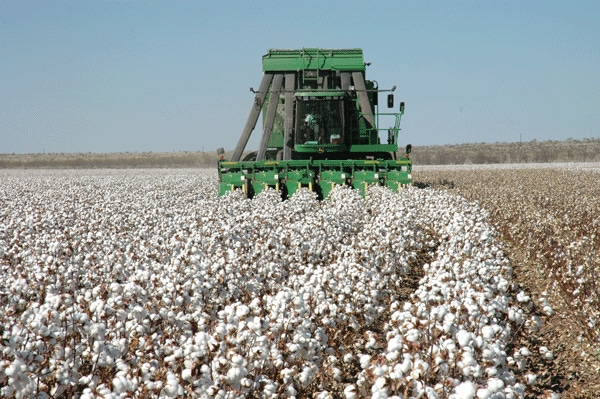February 1, 2012

Ironically, fears of another drought may result in fewer irrigated and more dryland cotton acres in the Texas High Plains this year, said a Texas AgriLife Extension Service expert.
Typically, the Texas High Plains cotton acres will be nearly evenly split between dryland and irrigated, said Mark Kelley, AgriLife Extension cotton specialist, Lubbock. This adds up to about 2 million dryland cotton acres planted, with the same number of irrigated acres.
"Last year, we had 4.6 million acres total, with about 55 percent being dryland," Kelly said. "Usually our acreage would be split with about a 52/48 percent mix of dryland and irrigated. Looking ahead there's a chance that we’ll see a little more dryland than irrigated this year."
With the area remaining dry, fears of continued drought are the biggest issue facing producers and will be at the heart of any additional shifts in planting, he said. "They will go ahead and plant, but if we don’t get some help from Mother Nature, a lot of the irrigated producers here have indicated they will just wait and see how things look before committing to an irrigated practice in 2012,” he said.
The "wait-and-see" game could play until July 15, which is the latest date producers can certify a crop as dryland for crop insurance purposes, he said. The producers he has talked to have indicated they plan to plant for irrigation, which is about four plants per row foot on row spacings of 40 inches, which works out to about 52,000 plants per acre, Kelly said.
"Typically, Texas High Plains cotton growers will "pinch back" a little for dryland and plant about three plants per row foot, Kelly said.
Input costs are considerably higher on irrigated cotton due to pumping costs, but the potential profits are higher too, so most producers with irrigation will probably go ahead for an irrigated crop, he said.
"Then they (those planting for irrigation) will play the wait-and-see game, and as the situation develops, if there hasn't been enough rain to fully augment their normal irrigation capacity, they will squeeze back on what they can manage with their irrigation," Kelly said. "I would highly recommend that they stay in conversation with their crop insurance agent, and make sure everything they're doing is communicated, so that can be insured properly," he added. "They need to stay in contact with their insurance agent throughout the process. We don't want anyone getting to the point where their crop is uninsurable."
You May Also Like




